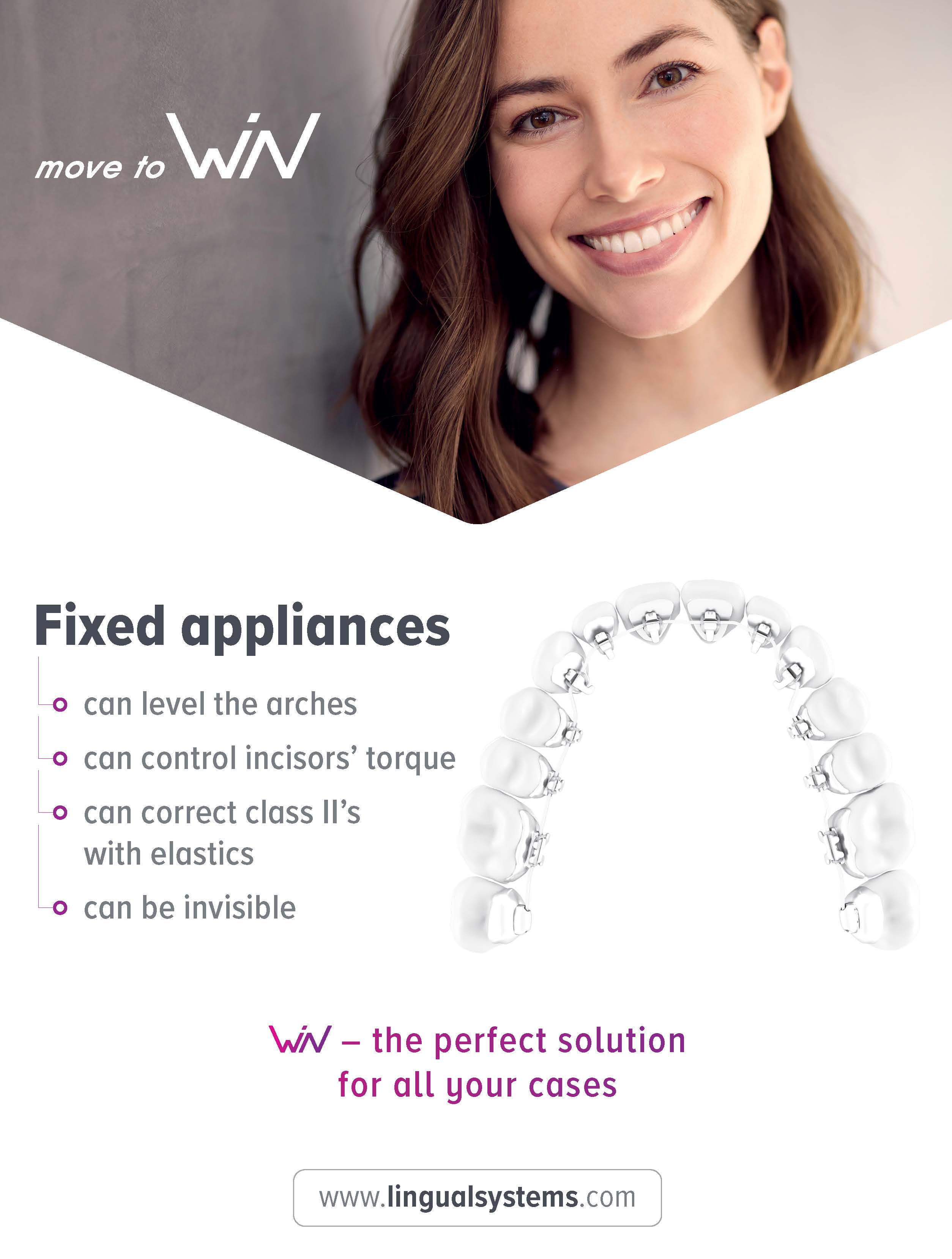I often see orthodontists posting on social media about their “worst cases,” but I generally have my doubts about those stories. What they claim to be their worst cases usually turn out to be their best recoveries. Kids these days call it a “humblebrag.” I still believe our actual worst cases do need to be discussed, because we tend to learn the most from our failures. That is the theme of this special issue of JCO, for which we were able to convince some of the best-known orthodontists in the world to share their mistakes.
Let’s review my greatest orthodontic failure—one without a feel-good ending. “Samantha” is a Hispanic female who presented to my office at age 7. She displayed a deficient maxilla; a Class II, division 2 malocclusion; a deep overbite; severe crowding; and hypomineralization. Her radiographs revealed labially displaced maxillary canines (LDCs), with the left canine severely ectopic; tapered roots; and potential mandibular second-molar impaction. Her medical history was unremarkable, with the exception of dental anxiety.
My orthodontic plan was conventional: Phase I treatment with a rapid palatal expander, anterior braces, and immediate canine-exposure surgery, followed by a later Phase II with full-arch braces. Samantha’s anxiety made treatment challenging from the beginning, with long appointments and slow progress, including a lengthy delay in scheduling the canine exposure.
Critical signs were evident after the surgery. Both LDC follicles had resorbed the lateral-incisor roots. The upper left posterior teeth also experienced significant root resorption, which continued over the next year regardless of whether I implemented cantilever mechanics, light forces, or intermittent breaks. Phase I progressed directly into Phase II, in which I decided to extract both lateral incisors and finish with a bilateral substitution.
To make matters worse, the maxillary left canine became ankylosed and also needed to be extracted, and both maxillary central incisors experienced 80% root resorption. To mitigate the root resorption, we removed the braces and switched to a complimentary Invisalign Teen therapy. Unfortunately, as with most of Samantha’s orthodontic treatment, the Invisalign phase was slow and challenging—this time attributable to poor compliance with the aligners.
After 10 years, Samantha has finally completed her orthodontic treatment. She is currently awaiting a bone graft and implant for the left lateral incisor. She finished with a Class II molar relationship and a right canine-lateral substitution. Her resorbed maxillary central incisors are splinted and remain stable. The mandibular second molars are partially impacted even after her wisdom teeth were removed. I plan to cover all expenses for her surgical and restorative treatment.
In hindsight, there were several factors working against me, including a genetic predisposition to root resorption, the LDCs, the hypomineralization, and the patient’s anxiety. I now lecture on the subject of ectopic canines, and I always emphasize the risks of LDCs; unlike their palatal counterparts, they are more commonly associated with maxillary deficiency, lateral-incisor root resorption, and ankylosis. We experienced all these problems.
Today, Samantha’s case would be straightforward. During the recall phase, I would refer her for extractions of the maxillary right first premolar and left canine and the mandibular second premolars. “Driftodontics” would take care of the displaced canines and posterior crowding, as well as the risk of root resorption and the dental anxiety that made Phase I so debilitating. My lesson was that I expanded when I should have extracted, and I began treatment when I should have waited.
Itʼs often said that experience is a bitter teacher. Not a day goes by that I don’t reflect on Samantha’s treatment. I am humbled and saddened that she will require a lifetime of restorations, which might have been avoided with a different approach. Although my failure wasn’t negligence, I lacked the experience to manage such a complicated case. If I only knew then what I know now, I wouldn’t have had to learn such a difficult lesson the hard way.
NDK



COMMENTS
.